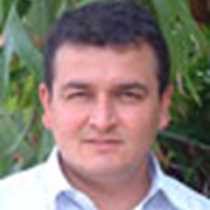Barro Colorado Island & the Panama Canal
Today we woke up anchored at 85 ft above sea level, in Gatun Lake; this is the main source of fresh water for filling the Panama Canal locks during the transit of every ship. This lake is fed by the Chagres River, and by the high rainfall in the tropical forest that surrounds the area.
After breakfast we had on board Edbert Leigh, PhD one of the long-term scientists on Barro Colorado Island, a Research Station of the Smithsonian Institute. A former mountain top during the construction of the Panama Canal, Barro Colorado Island is now one of the most studied tropical rainforests of the world. Dr Leigh gave us an introduction to the importance of this research station and its contributions to the knowledge on tropical ecology.
Later we prepared for a dry landing in order to explore some of the many miles of trails that cross this island. Other guests decided to navigate the perimeter on Zodiacs, searching for wildlife and learning about the tropics with one the local scientists. While cruising around the island, the guests were able to see a mother dull-mantled howler monkey with a baby and a young American crocodile as well.
In the forest, our guests heard the howler monkeys and eventually spotted some of them crossing the high canopy. They also found a seldom seen yellow poison dark frog, a walking stick insect, a great tinamou, white face monkeys and agouties.
At noon we gathered for lunch as we resumed our transit in the canal. The Panama Canal Authorities pilot took us through the banana channel, a quieter and rarely traveled route.
Soon we arrived to the Gatun Locks where we had a great view of the operations. As we left them on our way to Colon Port, we spotted a large American crocodile basking over a bank. We had an unusual early arrival to the pier where we had cocktails and recaps while looking at the slide show of our guest photographers.




